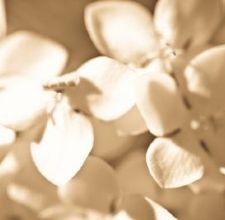Orchids are a colorful addition to your tropical outdoor garden or indoor container garden, but black spots on the petals or leaves could be a sign of trouble. Identifying the cause of the spots is imperative in preventing the spread of potentially harmful plant diseases or infections.
Harmless Spots
-
Black spots are not always a sign that your orchids are in danger or diseased. Some orchid species feature naturally occurring spots on the petals of the flower. Species like Maxillaria cucullata or Brassada mivada feature leaves dotted with dark brown to black spots as part of the natural petal coloration. If the spots occur on the petals of your orchids, identify the species to determine if the markings are a trait of the cultivar. During times of high heat or drought, the leaves of some high-elevation orchids may develop small black spots, but improved environmental conditions will reverse the minor damage.
Spots on Leaves
-
Fungal and bacterial infections often manifest in the form of soft black spots on the leaves of the orchid plant. The fungus Diplocarpon rosae is more commonly referred to as black spot, and orchids are particularly susceptible to the potentially fatal plant disease. Bacterial leaf spot, caused by Pseudomonas cichorii, results in raised black bumps on the leaves of orchids. Both bacterial and fungal infections in orchids can result in the death of your plants if the diseases progress to the plant’s root system. Isolating the affected plants, removing the damaged leaves and treating the orchid with a fungicide or bactericide made with ammonia are effective courses of treatment for infected orchids.
Spots on Flowers
-
Orchids are at risk for a fungal infection that results in small, mushy black spots on the petals of the flowers. Botrytris cinerea first causes black spots to occur on the flowers or buds of orchids, and if the fungus is left untreated, the infection will advance to a gray mold that consumes the flowers of the plant. The first line of defense against a botrytris infestationis to maintain adequate air circulation and limit humidity around your orchids and their soil. If the infection continues, a fungicide spray will treat the disease.
Preventing Recurrence
-
If the black spots on your orchids are the result of a fungal or bacterial infestation, isolating the infected plant will prevent the disease from spreading to otherwise healthy orchids. Either use a sharp blade to remove the infected leaves, or uproot and re-pot the diseased flower. Though orchids have a reputation as tropical flowers, most species are suited to temperatures that don’t exceed 85 degrees F, and excess heat creates a breeding ground for potentially harmful fungus and bacteria. High humidity also promotes bacterial and fungal growth so maintain adequate air circulation with a fan and do not over-water or over-fertilize your orchids.


Deprecated: strpos(): Passing null to parameter #1 ($haystack) of type string is deprecated in /home/agriviek8Qv/agriviet.net/public_html/wp-includes/comment-template.php on line 2522